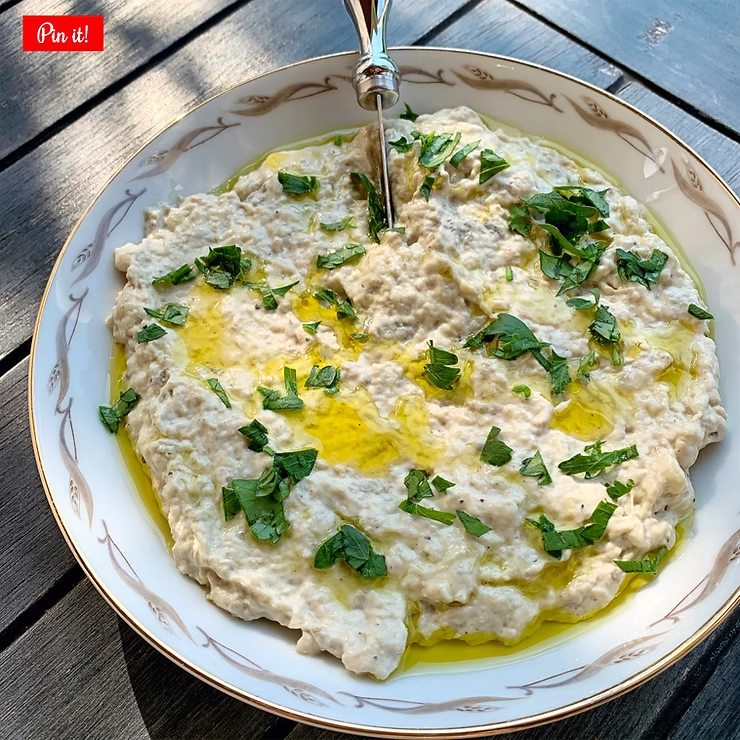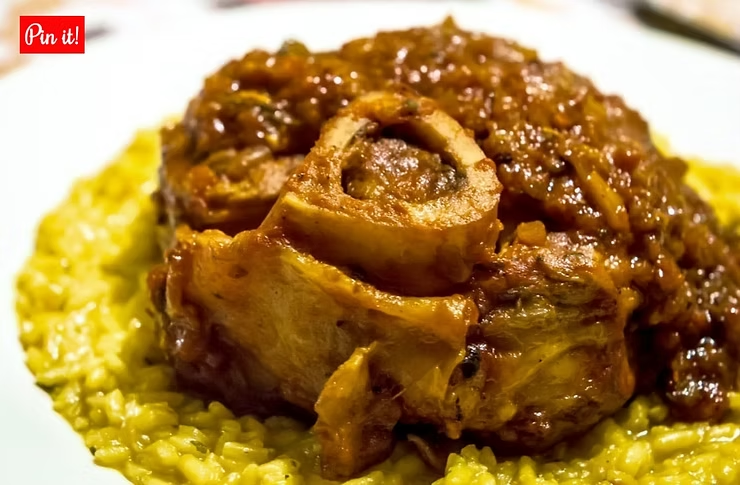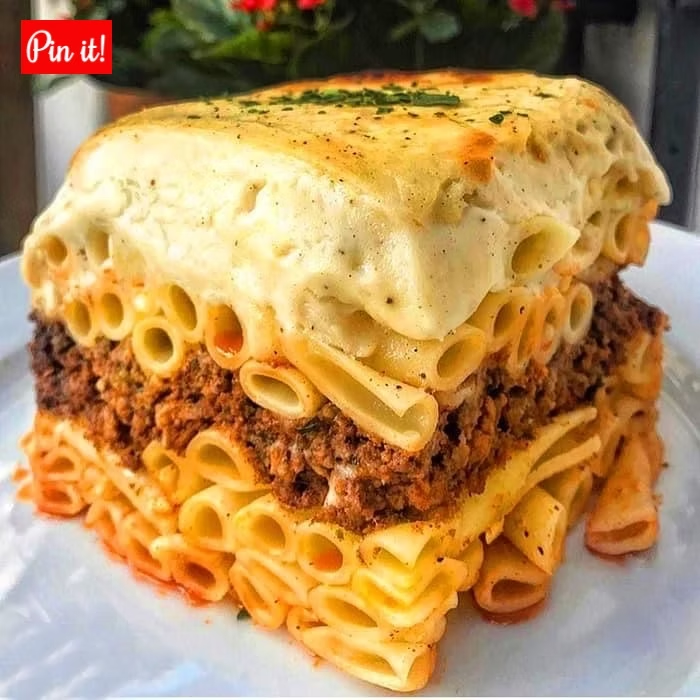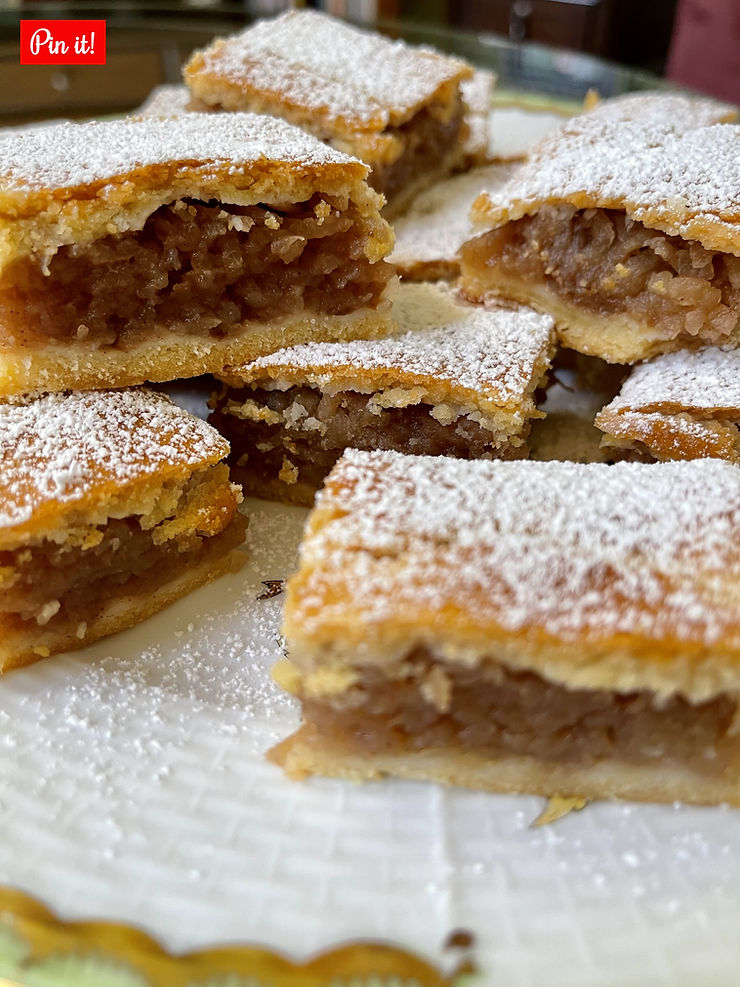In my most recent post, a couple of days ago, we ‘traveled’ to Vienna! So, no better time than the present to virtually taste some strudel. Strudel (a German word meaning ‘swirl’) is an iconic dessert in both Austria and Hungary.
While strudel became popular in the Austro-Hungarian Empire during the 19th century, the pastry component likely descended centuries earlier from the Turkish baklava, introduced into Austria by the Ottomans in the mid-16th century. Traditional homemade strudel, as made in the villages of Hungary, however, is very daunting … at least to me. There they make a super-thin very elastic dough that they work vigorously, rest, roll out, and then S*T*R*E*T*C*H out over the dimensions of a long table .. and HOPE that it doesn’t tear or develop holes! Purists say that it should be stretched so thin that you should be able to read newsprint through it. Yummy, for sure, but not for me, at least not on a routine basis! I don’t have time (or patience) for that! But, don’t despair, I have found a recipe that is super simple and nearly equally delicious, yet stress-free and manageable for a busy working woman! I make it all of the time.
Traditionally, the dough is stretched VERY thin and then laid out on a tea towel, as shown in the pictures above. It is filled and rolled, with the help of the tea towel, then baked in the oven. For my recipe, I use thin phyllo dough that can be purchased in large sheets in the grocery store’s frozen section. Instead of tea towels, I use parchment paper. I place a silicone sheet over my stone baking pan to prevent sticking. You can make strudel with many various fillings such as sweet cheese and raisins, poppyseeds, sweet or sour cherries, apples and walnuts, or apricots; or make savory varieties with spinach, cabbage, potato, or sauerkraut. I chose to fill mine with apples and sour cherries. I will share both of these recipes with you.
The Dough
Use large phyllo sheets. Sold frozen. Thaw out completely. Place parchment paper on your countertop. Layer 7-8 sheets of phyllo brushing each sheet with a mixture of (1 egg + 4 Tbsp of oil + 2 Tbsp of sour cream). Do not baste the topmost layer. It is helpful to keep a slightly damp towel over the phyllo sheets that are waiting to be laid and basted. This keeps them moist so that they are easier to handle. Then, sprinkle a little semolina on the topmost layer. Next, spread the filling over the top layer and roll it up (along the long axis) with the help of the parchment paper. Carefully place the roll on the silicone sheet-lined baking tray. Cut off the thick edges to create blunt ends. Mix 1 egg with a little melted butter and baste the top and sides of the roll. Poke the top in multiple places with a toothpick to allow venting. Place into a preheated oven at 350 F for 1 hour until golden color. Let cool a little before you slice. Slice into 2″ segments on a slight angle. Dust with confectioner’s sugar and/or top with whipped cream.
The Filling
Sour Cherry Filling:z
1 jar (24 oz) sour cherries without pits
1 can (15 oz) sweet cherries without pits
2 Tbsp sugar
1 Tbsp cinnamon
1 packet vanilla powder
2 handfuls of coarse semolina
2 Tbsp canola or sunflower oil
Drain the sour cherries and the sweet cherries and discard the liquid. In a large bowl mix the two cherries, sugar, cinnamon, and vanilla powder. Coat the cherries well. Briefly, fry the semolina in the oil on medium heat. Add the cherries to the “fried” semolina. Mix well. Spread the sour cherry filling over the top layer of phyllo. Then proceed with rolling up, as noted above.
Apple Filling:
4 Honeycrisp apples; peeled, thinly sliced
2 Tbsp sugar
1 Tbsp cinnamon
1 packet vanilla powder
2 handfuls of coarse semolina
2 Tbsp canola or sunflower oil
Mix the peeled and thinly sliced apples in a large bowl with the sugar, cinnamon, and vanilla powder. Coat the apples well. Briefly, fry the semolina in the oil on medium heat. Add the apples to the ‘fried’ semolina. Spread the apple filling over the top layer of phyllo. Then proceed with rolling up, as noted above.
I have made this decadent dessert many, many times and it is ALWAYS a crowd-pleaser! Perhaps the most challenging part of this straightforward and simple recipe is managing the phyllo. While the dimensions of the phyllo sheets are certainly much smaller and thereby easier to handle than the larger, fragile dough pulled across a table in the traditional setting; the phyllo sheets, too, can tear or stick together. Learning to work with phyllo is probably the trickiest part of this easy recipe. But that task is easily surmountable and the payback is GREAT! You will love this yummy dessert. Give it a try and leave your comments or upload your pics below so that I can see how it worked out for you.





